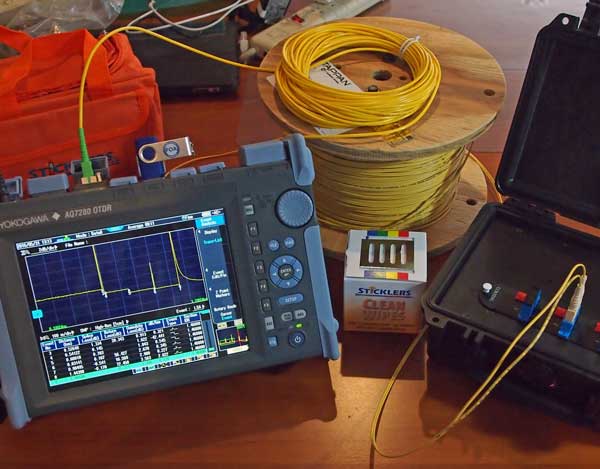Emerging innovations in robotic vision for factories
Wiki Article
All You Need to Understand About Robotic Vision and Its Applications in Advanced Optical Measurement Systems
Robotic vision stands for a considerable innovation in the crossway of computer system vision, expert system, and artificial intelligence. This innovation enhances the precision of optical dimension systems, allowing real-time data analysis and improved quality assurance. Its influence extends several industries, from making to health care. The developing landscape of robotic vision raises inquiries about future abilities and applications. What advancements lie ahead in this transformative area?Recognizing Robotic Vision: Secret Concepts and Technologies
Robotic vision includes the modern technologies and approaches that enable equipments to interpret and comprehend aesthetic details from their environment. This area combines elements of computer vision, artificial knowledge, and device learning to promote automated decision-making based upon aesthetic data. Secret concepts include photo handling, which involves the enhancement and analysis of pictures to extract purposeful attributes, and object recognition, which permits equipments to determine and identify items within a scene.
The Integration of Robotic Vision With Optical Dimension Systems
As sectors increasingly demand accuracy and efficiency, the combination of robot vision with optical dimension systems has actually become a transformative approach. This harmony allows robots to view and analyze their environments, enhancing the capability of optical measurement systems to assess and analyze things with unrivaled precision. By outfitting optical sensors with advanced imaging innovations, robot vision allows real-time data collection and handling, assisting in immediate changes to measurement parameters.The combination empowers automated systems to spot variations in dimensions, surface top quality, and placement, which are critical in top quality control procedures. Boosted formulas, such as artificial intelligence, additional enhance this integration by improving the systems' ability to adjust to various atmospheres and situations. Consequently, the integration not just simplifies dimension processes but additionally decreases mistakes, guaranteeing that products fulfill rigid market standards, thereby strengthening the function of robotic vision in the future of optical dimension systems.
Applications of Robotic Vision in Production
In modern production environments, using vision systems has actually changed manufacturing processes by enabling machines to execute tasks with remarkable accuracy and speed. Robotic vision systems are progressively employed for high quality control, where they inspect items for defects and assurance adherence to specifications. These systems use cameras and advanced formulas to analyze items in real-time, substantially decreasing the threat of human error.Furthermore, robot vision helps with automation in production line, permitting robots to precisely recognize components and construct them with marginal downtime. This technology likewise boosts inventory administration, as vision systems can check stock levels and find discrepancies, ensuring a seamless supply chain.
In addition, robot vision aids in the application of clever factories, where data from vision systems can be integrated with various other modern technologies to optimize workflows. Generally, the applications of robot vision in producing show its essential duty in boosting performance, quality, and productivity across various sectors
Robotic Vision in Healthcare: Transforming Client Care

In recovery, robotic vision aids in monitoring individual progress and tailoring treatment sessions to individual requirements. It supports medical professionals by automating jobs such as information collection and patient tracking, enabling more time to concentrate on direct patient communication. Additionally, robot vision enhances telemedicine by allowing remote medical diagnosis and online examinations, linking the gap in between people and medical care carriers. Generally, the application of robot vision in health care is reinventing person care, leading to improved end results, effectiveness, and patient contentment.
Future Trends and Advancements in Robotic Vision Technology
The rapid advancement of robot vision modern technology guarantees to additionally boost its applications throughout numerous sectors, including healthcare. Future trends indicate a considerable shift towards integrating man-made intelligence and maker discovering, allowing systems to pick up from huge datasets and enhance accuracy in time. Boosted sensing unit modern technologies and deep understanding formulas are anticipated to fine-tune object recognition capabilities, permitting robotics to translate complicated environments better.
Moreover, the assimilation of increased truth (AR) with robotic vision will likely revolutionize just how robotics assist in surgical treatments and diagnostics. This synergy will help with real-time information visualization, enhancing decision-making procedures. Furthermore, miniaturization of components will certainly bring about more compact and flexible robot vision systems ideal for a selection of jobs. As these advancements unravel, industries will certainly witness enhanced automation and efficiency, strengthening robotic vision as a keystone of innovative technical services.
Regularly Asked Concerns
What Are the Key Components of a Robot Vision System?
The main parts of a robotic vision system consist of cameras for photo capture, processors for data evaluation, algorithms for analysis, and actuators for movement. Together, these components enable robotics to perceive and communicate with their setting efficiently.Just How Does Robotic Vision Improve Accuracy in Measurements?
Robotic vision improves dimension accuracy by using innovative imaging technologies, making it possible for precise item discovery and spatial evaluation. This capability minimizes human mistake, increases repeatability, and enables real-time changes, ultimately improving general dimension reliability and efficiency.What Industries Benefit Most From Robotic Vision Innovation?
Numerous sectors benefit significantly from robotic vision innovation, consisting of production, medical care, farming, and logistics. These fields make use of boosted accuracy, effectiveness, and automation, causing enhanced productivity and decreased operational prices in their corresponding procedures.Can Robotic Vision Solutions Work in Low-Light Conditions?
Robotic vision systems can indeed operate in low-light problems, using sophisticated sensors and formulas to improve picture clarity. This capacity permits them to do efficiently in numerous atmospheres, including commercial and monitoring applications, despite minimal lighting.What Are the Expenses Associated With Applying Robotic Vision?
The expenses related to applying robotic vision vary substantially, influenced by parts such as cams, software optical fibre diameter analyser application, and integration. Extra expenses consist of maintenance, training employees, and prospective upgrades to existing systems, which can accumulate gradually.Report this wiki page